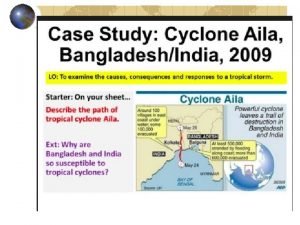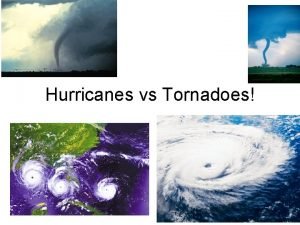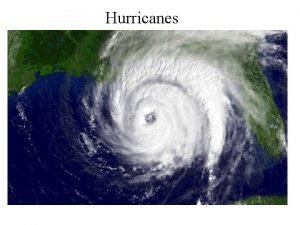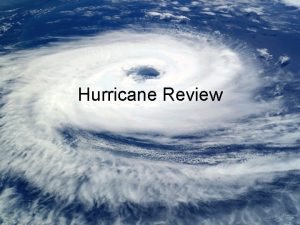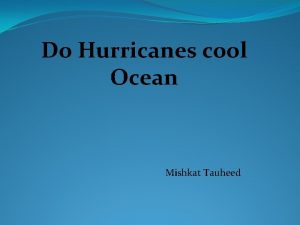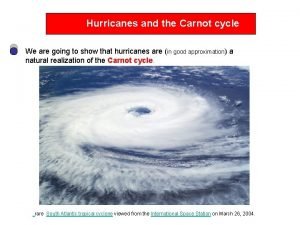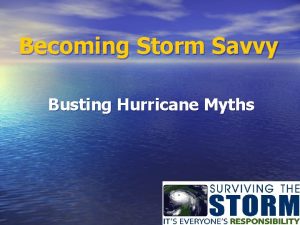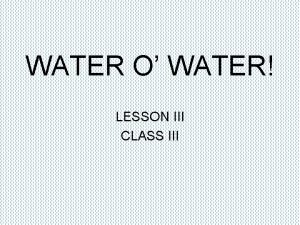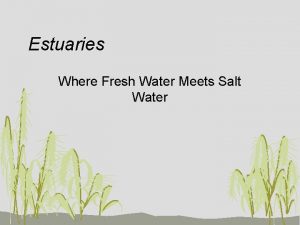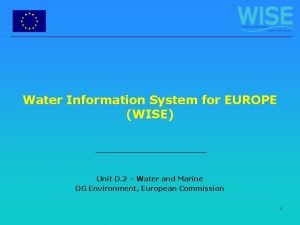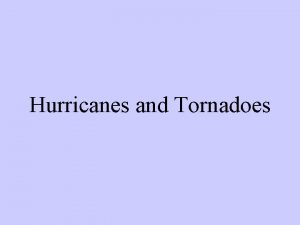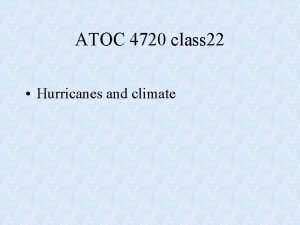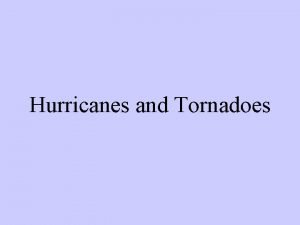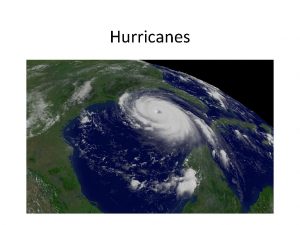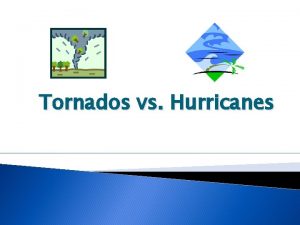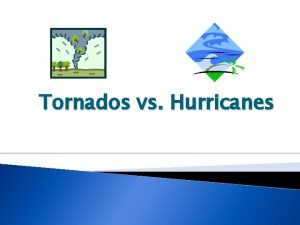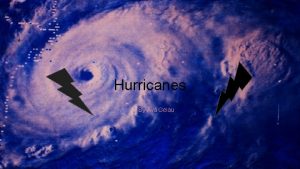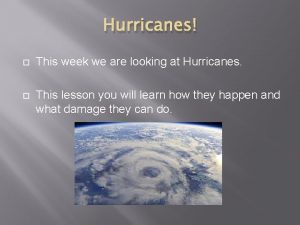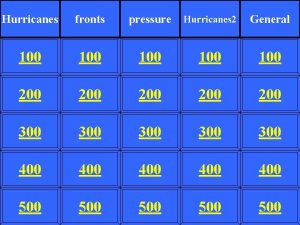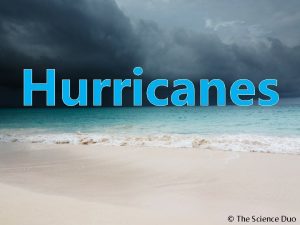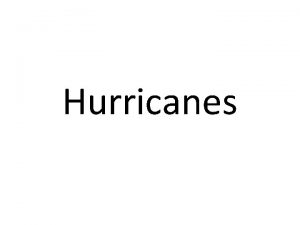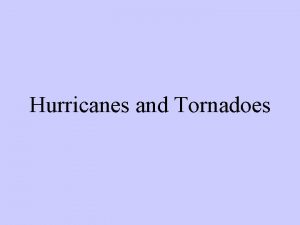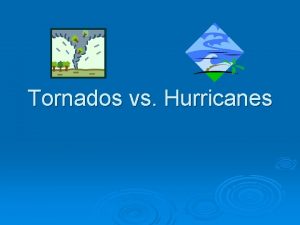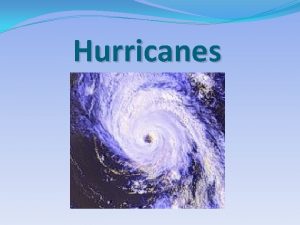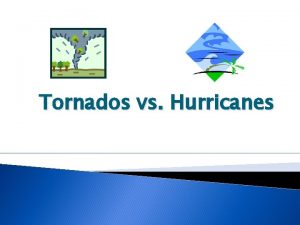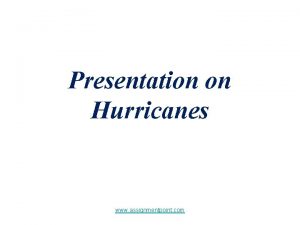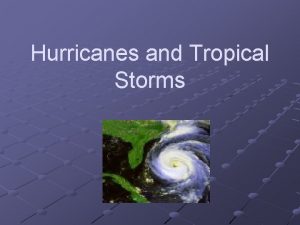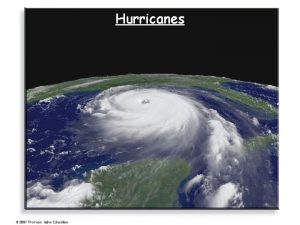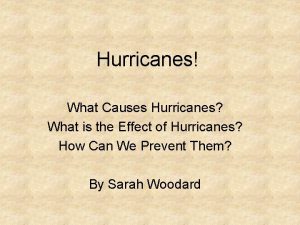Water on your own Hurricanes on your own


















































- Slides: 50


Water – on your own Hurricanes – on your own Wildfires - done Tropical forests of Amazonia - done 2

Updated version to be received today 3

New syllabus to be given to you all Tuesday 4


1. 2. 3. 4. Impacts of a carbon dioxide doubling on crop production will most likely be fairly small at the global scale – but significant in tropical larger; larger carbon dioxide increases would likely result in significant global losses Overall uncertainty remains poorly quantified Large uncertainties associated with agricultural impact analyses have important implications for agricultural development Climate change is just ONE of several ongoing trends that will shape the future of food security 6

Developed countries Gains expected in all but the warmest scenarios Developing countries Worse impacts Warmer current climates + limited human adaptive capacity Expected food insecurity -> could impact 300 million *additional* people Existing food insecurity 7

Different agricultural regions 1. Example: grid resolution Impacts of carbon dioxide fertilization? 2. How to quantify? Need to include interactions of CO 2 with temperature, water, nutrients, and other factors One solution? Adopt a conservative policy approach and assume no carbon dioxide fertilization effect Hunger: 20 to 30 million; w/o – 50 to 600 million 8

Yield response to changes in mean growing season climate 3. Most crops exhibit reduced yields in warmer years Exceptions – high latitude regions – were warmer = longer growing season Less analyzed: uncertainties in crop responses 4. Yield response to changes in climate variability Increased climate variability -> negative impacts on cropping systems; extent: uncertain Crop yields + farmers management practices 9

5. Adaptations assumption: farmers and other institutions will respond to changes – either by changing practices at the farm level or by shifting in production between different parts of the world Examples: planting date? Cultivar choice? New irrigation infrastructure? More effective in developed rather than developing world Other uncertainties? 10

Extreme climate events Ozone effects on yields [fossil fuel burning and increased temp will result in significant increases in tropospheric ozone levels] Pest and disease damage Sea-level rise Grain quality effects Impacts on non-major crops 11


Climate Change and Human Health Climate change should be billed as a 'health' not 'environmental' disaster The researchers from George Mason University's Center for Climate Change Communication (4 C), whose study was recently published in the BMC public health journal, said the health impacts of climate change had been 'dramatically under-represented' in discussions by scientists, policy-makers and NGOs who instead focused on 'geographically remote' impacts like melting ice caps in the Arctic.

Epidemiological Framework Social Environment Host Agent Ecosystems Global 14

Climate change and health: pathway from driving forces, through exposures to potential health impact. Source: Climate Change and Human Health – Risks and Reponses. Summary (WHO, 2003) 15

Climate Change and Human Health Pathways 16

POOR RAINS Inadequate in volume and distribution Poor grass Poor Harvest People Underfed (Malnutrition) Poverty Less meat, less milk Overgrazing where grass is good Animals underfed Animal death Over-grazing, trees cut down for fuel Grass /vegetation cover lost LAND DEGRADATION 17

Model projections Projected impacts of heat waves Average summer mortality rates attributed to hot weather episodes Changes with doubling or tripling of carbon dioxide -> projections of mortality can double or triple in next several decades 18

What have we seen? Recent Heat Waves Location Approx. No. Deaths Western Europe 2006 3, 392* India: June 2003 Europe 2003 72, 000# T: 122 degrees F > India 1998 2, 541^ USA 1995 670 1400 deaths USA 1993 200 July Floods USA 1966 500 Japanese B Aust [Melbourne] 1959 145^ -------------------------------------- encephalitis ------------------------------------------- • • • Year * Netherlands 1, 000; Belgium 940. # Italy 20, 089; France 19, 490; Spain 15, 090; Germany 9, 355. ^ Estimation. Total probably higher. 19

Summer 2003 heat wave France, Germany, Italy, Spain, & Portugal Up to 72, 000 deaths Temperature was 10 degrees C (18 degrees F) above 30 year average 20

European Heatwave 2003 21

Hotter? Expect more extreme weather events But not all extreme weather events are attributable to CC Need to know: what is expected with natural variability assuming no carbon dioxide forcing and with climate forcing from additional anthropogenic greenhouse gases UK Had. CM 3 model: an exceptionally warm summer up to 2020 will become a normal summer by the 2040 s in Europe … they projected an increase 100 -fold over the next four decades 22

So…Effects of Climate Change DIRECT: Thermal stresses: extremes of hot or cold Respiratory consequences: changes in patterns of exposure to spores, moulds, etc. Direct effects: loss of life or health due to: storms, floods, drought 23

Air pollution and climate change Pollen and Groundlevel ozone Heat waves Droughts and fires Socio/economic/e motional factors Floods and fungi Indoor pollutants Diesel particles mold Asthma: 2 -3 x since 1984 Pollen and carbon dioxide 24

Emerging infectious diseases 30 diseases new to medicine since 1976 New diseases… Old diseases… As climate changes Change the range at which they occur Extremes affect vector populations 25

Infectious Diseases Increased mean, minimum temps along with wetter winters affects the range, proliferation and behavior of vector organisms Developed world populations generally have more resources to face such problems Malaria currently affects 350 million people annually, 2 million deaths Potential for transmission of malaria from 45% 60% of world’s population 26

27

28

29

30

31

Biologic response to changes in climate Global warming and wider fluctuation in weather help to spread diseases Temperatures – affect growth, development and survival of microbes and the vectors Weather affects the timing and intensity of disease outbreaks (Mc. Michael et al, 2003) 32

Biologic response to changes in climate: Infectious diseases Warmer environment and mosquitoes Boost rate of reproduction Increase the number of blood meal Prolongs their breeding season Shorten the maturation period of microbes they carry Warmer winters – tick-borne lyme disease spreading northward in Sweden, US and Canada (Epstein, 2005) Heavy downpours Drive rodents from burrows: risk of zoonotic diseases Create mosquito breeding sites Faster fungal growth in houses Flush pathogens and chemicals into waterways ▪ Milwaukee’s cryptosporidiosis outbreak in 1993 ▪ Katrina’s flood: water-borne pathogens and toxins spread. 33

Extreme weather events and disease clusters Extremes! High correlation between droughts & floods and rodent-borne and mosquito-borne diseases Sequence of extremes Example: Hurricane Mitch (Honduras) 6 feet of rain in 3 days 34

Precipitation extremes Past century average annual precipitation: 7% Heavy rain events (> 2 inches/day): 14% Very heavy rain events (> 4 inches/day): 20% Western drought + Devastating rains 35

36

Diseases Carried By Mosquitoes West Nile Malaria Dengue Fever Yellow Fever West Nile (1937: Uganda. Now: Spreading across Canada) Wet spring. Dry, hot summer Climate change will influence spread of WNV And occurrences of other 37 Vector diseases

38

39

Does climate change have a measurable impact on health? Climate sensitivity: 5% increase in diarrhoeal disease for each 1 o C temperature increase (developing countries only) Change in relative risk: Projected temperature changes relative to 1961 -1990, overlaid on population distribution map to give per capita increase in diarrhoea risk. Disease burden attributable to climate change: Relative risk under each scenario/time point multiplied by WHO estimates of current and future 'baseline' diarrhoea burden in each region. Estimated 2. 4% of diarrhoea (47, 000 deaths) attributable to CC in 2000, and approximately 5% ( 60, 000 deaths) in 2020. (World Health Report 2002) 40

Primary economic, technological social, cultural drivers Environmental change An Eco. Health View Health impact e. g. , + UVrad thermal stress T, soils Ecosystem change Climate change will Impact on all these Relationships!! +mosquitoes +/- food Health impact Livelihood population Social, political Economic relations Jobs, poverty consumption Socio-economic Level of risk Health impact 41

INDIRECT: Effects of Climate Change MANY UNCERTAINTIES Alterations in range and activity of vector-borne pathogens e. g. , malaria, West Nile virus, dengue Possibility of new infectious disease agents Changes in person-person infections including food-borne and water-borne Nutritional and health consequences of local and regional changes in agricultural production Consequences of sea level rise Loss of home, employment, population displacement 42

Human impacts of other forms of overload Human environments and livelihoods deteriorate Social destabilization and conflict will escalate Some of the world’s poorest populations becoming more “demographically entrapped” Mc. Michael, 1997 limited data Land exceeds carrying capacity starvation, disease, fratricide Rwanda prototype 1980 s 43

Vector-borne diseases Climate change, by altering local weather patterns and by disturbing life-supporting natural systems has significant implications for human health Models suggest that higher temperatures will enhance the geographic range and transmission rates of vector-borne diseases Children will be disproportionately affected, as they are more prone to infection and death from parasites. 44

Food security and malnutrition Many of Africa’s poor are very highly dependent on climate-related factors for their livelihoods. Weather disruptions exacerbated by climate change negatively impact Africa’s economic growth and food security, and thus aggravate malnutrition Undernourishment is a well-studied cause of stunted physical and intellectual development and increased disease susceptibility in children. 45

Food Production In some countries affects nutritional status, child growth, health Depletion of ocean resources unless offset by advances in aquaculture jeopardize health in developing/poor countries 46

Sea-level rise Displacement of coastal population Predicted rise of 0. 5 m would immediately inundate 10% of land in Bangladesh Alters sewage and waste disposal Viability of coral reefs and wetlands Again affects range of disease vectors 47

Land degradation Absolute numbers of malnourished persons increasing Many world’s fisheries overexploited World loss of biodiversity We have occupied, damaged or eliminated natural habitats of many species Fastest loss of species ever; we may cause 1/3 of all species alive in last century to be gone before end of this century 48

Land degradation Agricultural productivity: to maintain food production have to resort to maintaining vigor and resilience by diversity of species to be source of genetic additives A high number of medicinal drugs come from naturals; can’t be replicated in labs Science continues to test many new drugs from nature each year 49

Climate Change and Environmental Justice Oil-related health consequences Extraction: Nigeria, Ecuador, Mexico Refining and Benzene Utility plants and mercury Air pollution and inner city truck routes Economic inequities Vulnerabilities – coping, adaptation Restoration, prevention Public health infrastructure Still: No nation is immune 50
 Water and water and water water
Water and water and water water Analytical sae examples
Analytical sae examples Tornado and hurricane venn diagram
Tornado and hurricane venn diagram Describe the distribution of tropical storms
Describe the distribution of tropical storms How are hurricanes categorized
How are hurricanes categorized Hurricanes vs tornadoes
Hurricanes vs tornadoes Hurricanes definition
Hurricanes definition Which of the following is true concerning hurricanes
Which of the following is true concerning hurricanes Do hurricanes cool the ocean
Do hurricanes cool the ocean Hurricane carnot engine
Hurricane carnot engine Hurricanes tropical storms
Hurricanes tropical storms Why do hurricanes lose strength over land
Why do hurricanes lose strength over land Hurricanes myths and facts
Hurricanes myths and facts Hurricanes earth's mightiest storms
Hurricanes earth's mightiest storms Compare and contrast signal words
Compare and contrast signal words Bill nye storms
Bill nye storms Your notebook define the following terms in your own words
Your notebook define the following terms in your own words Your conscious awareness of your own name
Your conscious awareness of your own name Enagic compensation plan
Enagic compensation plan Drinking fountain
Drinking fountain Dock water allowance
Dock water allowance How can we reuse water for class 3
How can we reuse water for class 3 5 divided by 1/4
5 divided by 1/4 A paved blacktop parking lot was built
A paved blacktop parking lot was built Water heat exchanger
Water heat exchanger Fresh water meets salt water
Fresh water meets salt water Warm water rises in a lake. cold water descends.
Warm water rises in a lake. cold water descends. Water water everywhere project
Water water everywhere project Explain important of watershed management
Explain important of watershed management Unit 11 water water everywhere
Unit 11 water water everywhere How to create your own top level domain
How to create your own top level domain Parable writing
Parable writing How to make parable
How to make parable Making new words your own
Making new words your own The life you save may be your own irony
The life you save may be your own irony What is the message of the life you save may be your own
What is the message of the life you save may be your own Lesson four living on your own
Lesson four living on your own 14 line poem
14 line poem Myob mind your own business
Myob mind your own business Ruffles own your ridges hashtag
Ruffles own your ridges hashtag Own words questions national 5
Own words questions national 5 Carry your own weather
Carry your own weather Enjambment examples in literature
Enjambment examples in literature Write your own riddle
Write your own riddle Design my own coat
Design my own coat Space relationship in paragraph
Space relationship in paragraph Advantages of writing your own mission statement
Advantages of writing your own mission statement Create your own species
Create your own species Create your own civilization
Create your own civilization How to write my own declaration of independence
How to write my own declaration of independence What is an imaginative narrative
What is an imaginative narrative



